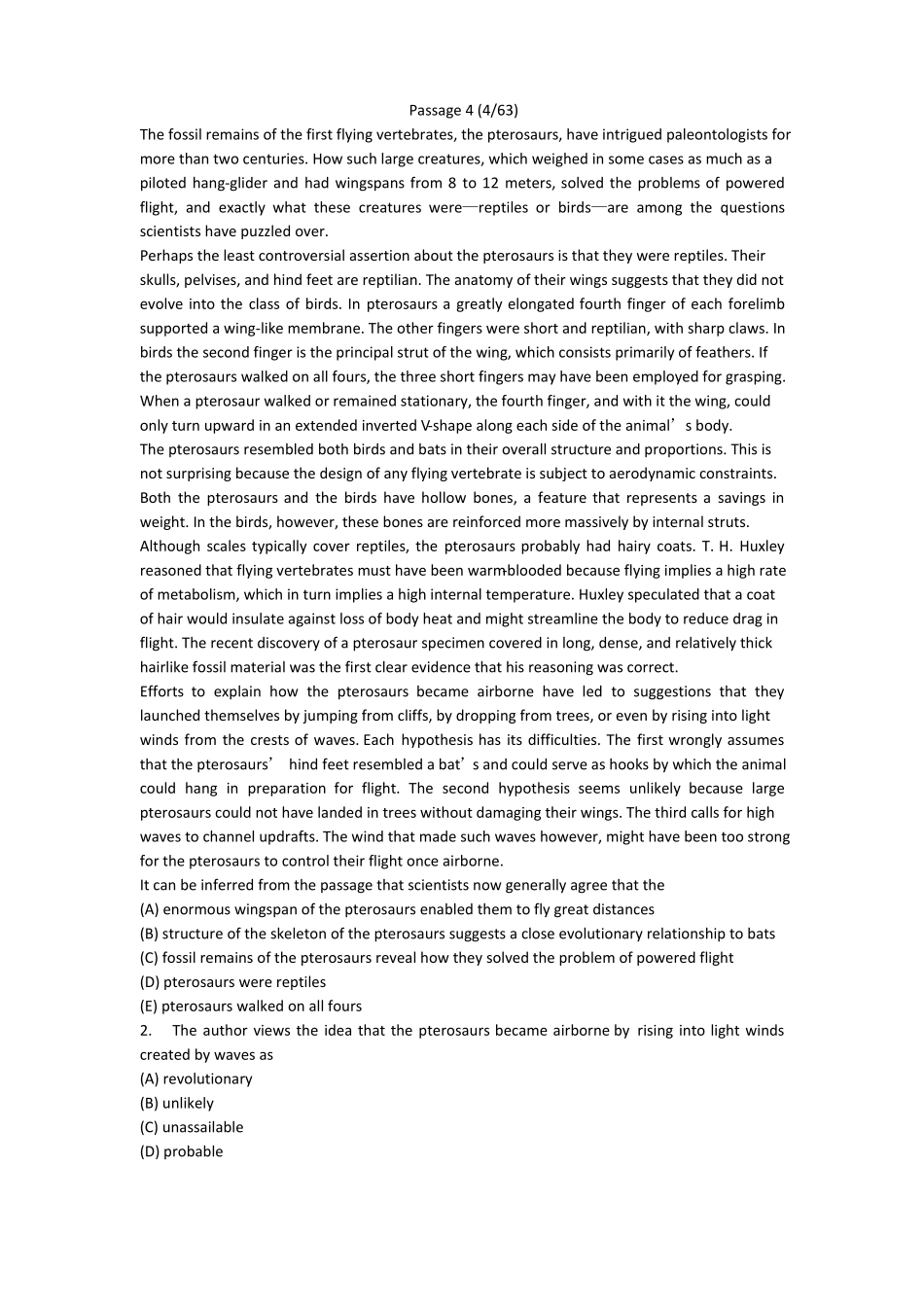Passage 4 (4/63)The fossil remains of the first flying vertebrates, the pterosaurs, have intrigued paleontologists formore than two centuries. How such large creatures, which weighed in some cases as much as apiloted hang-glider and had wingspans from 8 to 12 meters, solved the problems of poweredflight, and exactly what these creatures were—reptiles or birds—are among the questionsscientists have puzzled over.Perhaps the least controversial assertion about the pterosaurs is that they were reptiles. Theirskulls, pelvises, and hind feet are reptilian. The anatomy of their wings suggests that they did notevolve into the class of birds. In pterosaurs a greatly elongated fourth finger of each forelimbsupported a wing-like membrane. The other fingers were short and reptilian, with sharp claws. Inbirds the second finger is the principal strut of the wing, which consists primarily of feathers. Ifthe pterosaurs walked on all fours, the three short fingers may have been employed for grasping.When a pterosaur walked or remained stationary, the fourth finger, and with it the wing, couldonly turn upward in an extended inverted V-shape along each side of the animal’s body.The pterosaurs resembled both birds and bats in their overall structure and proportions. This isnot surprising because the design of any flying vertebrate is subject to aerodynamic constraints.Both the pterosaurs and the birds have hollow bones, a feature that represents a savings inweight. In the birds, however, these bones are reinforced more massively by internal struts.Although scales typically cover reptiles, the pterosaurs probably had hairy coats. T. H. Huxleyreasoned that flying vertebrates must have been warm-blooded because flying implies a hi...


